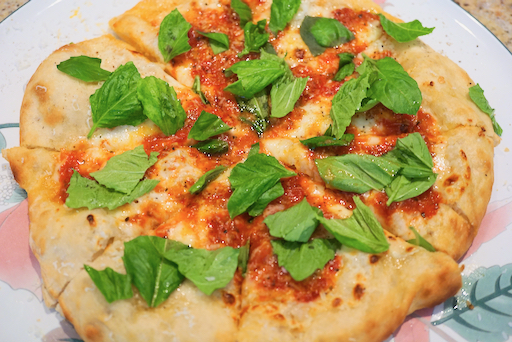Last weekend I made gyoza 餃子. As usual, I used the trimmings from pork tenderloin. I made up a batch using wonton skins but I had more gyoza stuffing leftover. Then, I saw a Japanese recipe using thin slices of eggplant instead of Wonton or Gyoza skin. Since I happened to have a Japanese eggplant (one we can get here is a small diameter elongated eggplant. I only rarely see the other varieties of eggplant available in Japan such as "Kamo-nasu" 賀茂茄子 or "Mizu-nasu" 水茄子). So, I made gyoza with this eggplant. A small amount of gyoza stuffing still remained after I made this dish so I stuffed a fresh shiitake mushroom to finish it up. I served this with some veggies as a starter one evening.
Ingredients:
One Japanese eggplant (one with small diameter and very long),
Potato starch (Katakuri-ko 片栗粉).
Peanut oils and sesame oil for frying
Skin the eggplant using a peeler on both sides lengthwise, cut crosswise into 2 inch long pieces and then slice lengthwise into 3mm thick pieces and soak in about 5% salted water (#1) until the eggplant pieces get soft/limp (It took more that 30 minutes).
Drain in a colander and press using the back of a ladle to press out excess moisture and line them up on paper towels (#2) and press with another sheet of paper towel to blot.
Sprinkle potato starch or Katakuri-ko (#3)
Wrap the gyoza stuffing by folding the eggplant in half (#4).
Since I still had some gyoza stuffing left, I stuffed one fresh shiitake mushroom (#5)
Add 1tbs peanut oil and splashes of dark sesame oil in a frying pan on medium flame and place in the eggplant gyoza (#6).
After a few minutes when the eggplant is browned, turn it over and put on the lid for several minutes and finish with the lid off for 1 more minute (#8).
This time, the stuffing was well-seasoned and did not need any dipping sauce. This is not bad but both my wife and I prefer regular gyoza. We both missed the lovely crunch of the crispy wonton skin.

















